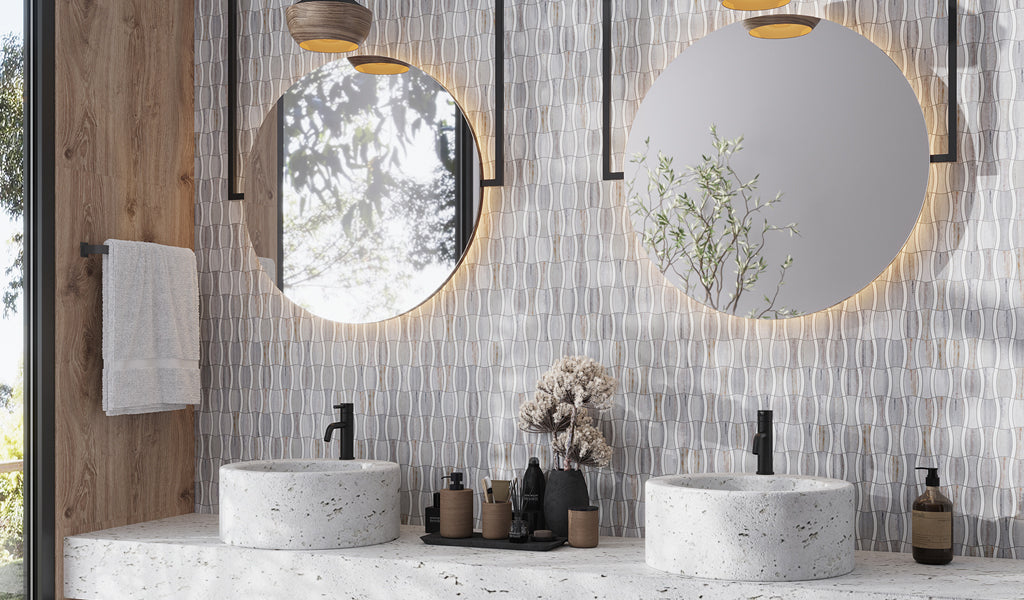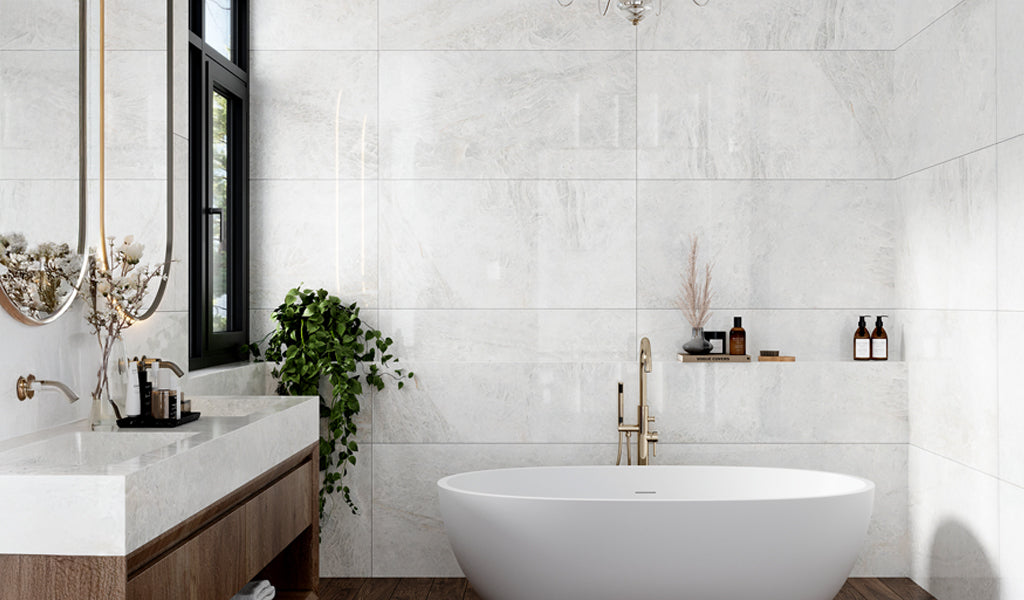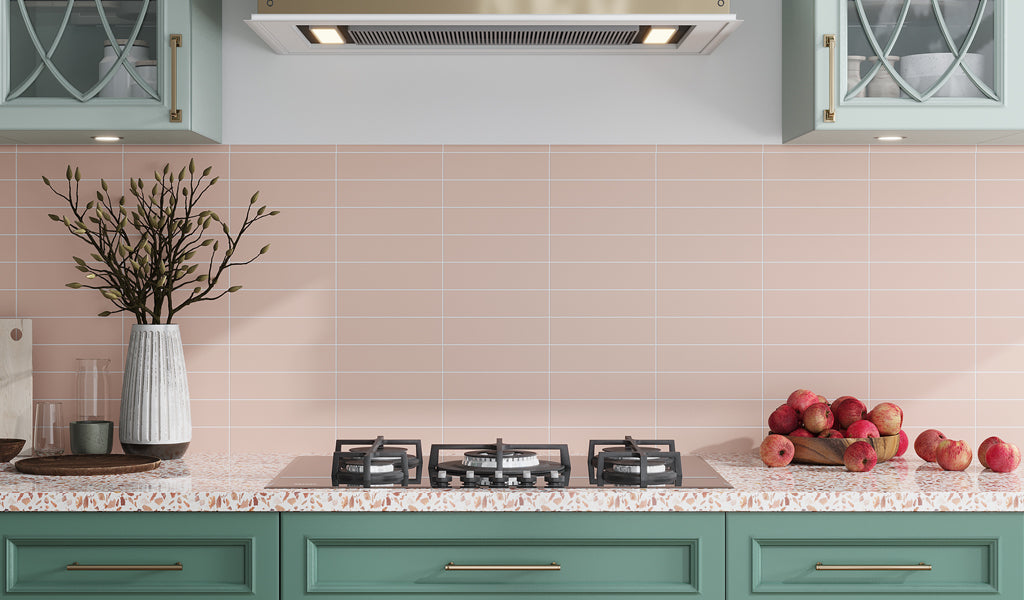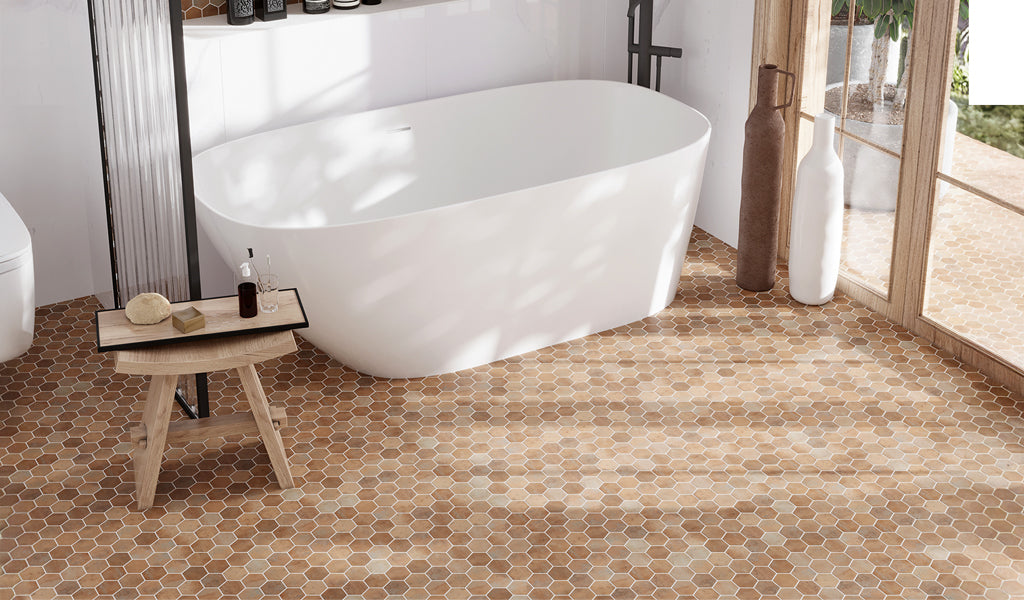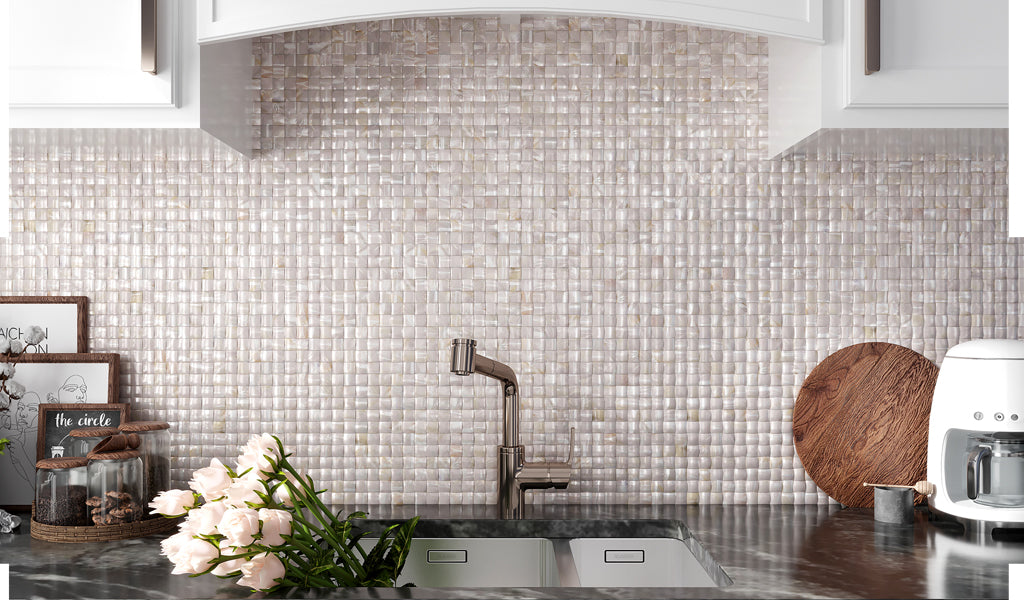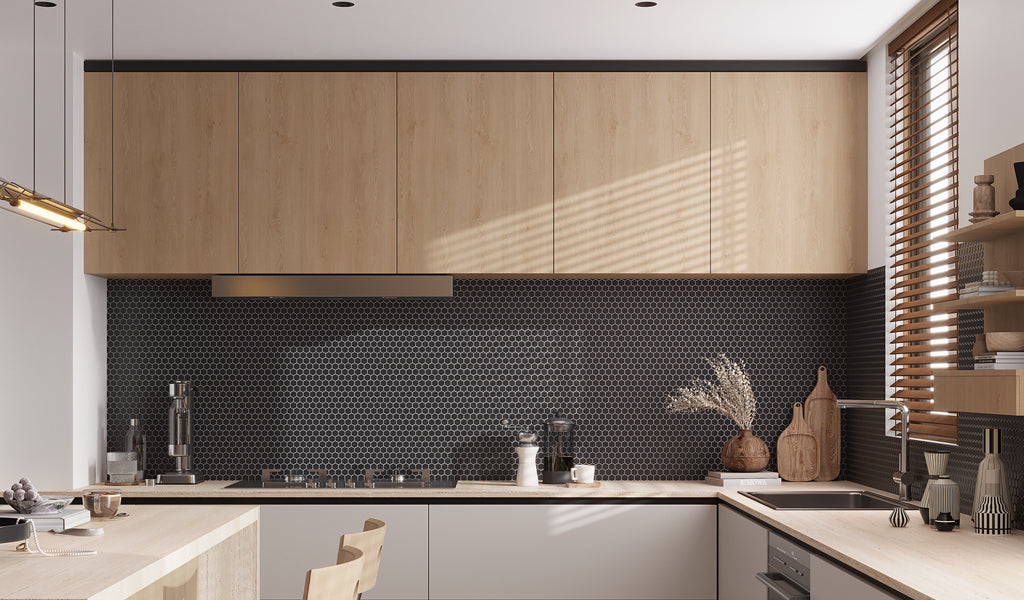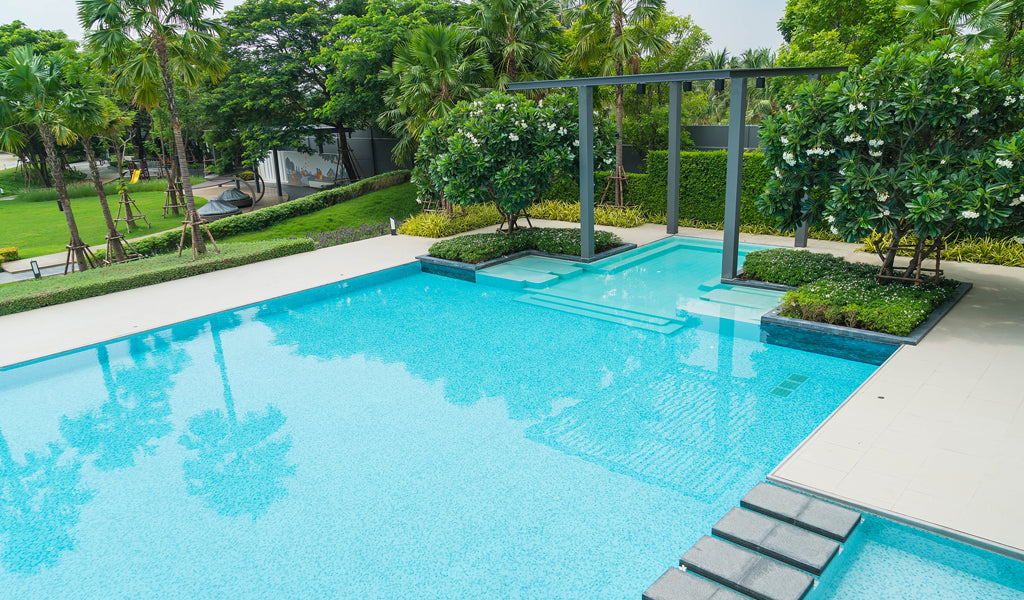Inspiring Kitchen Tile Backsplash Patterns for Every Taste
Apr 24, 2024Ready for a kitchen revamp? You don’t need to tear walls down to give your space an entirely new look. Kitchen backsplash tile can add just enough embellishment that serves as the focal point. Today we’re talking tile patterns!
Whether a cheeky hexagon adorning the surface above the range or a striking basketweave design that stretches to the ceiling, how you lay your tile can visually alter the room and create a jaw-dropping impact. To help you unleash your creative side, we share inspiring backsplash tile patterns ready to transform your space into a work of art!
Brick Pattern
The brick pattern (aka running bond) displays a staggered configuration that takes its cue from conventional brickwork. Simple to install yet visually stunning, the tile joints are offset to the center of the adjoining tile. Resulting in a cohesive look that appears both timeless and modern. White tile and dark grout in a classic bond will make your backsplash stand out for all the right reasons!
Straight Stack Pattern
Horizontal and vertical straight stacks present a clean and uniform twist to the classic subway tile. When accented with a contrasting grout color, a dramatic statement emerges.
Stacking tiles horizontally - on top and beside each other - draws the eye across the wall. The clean, straight effect gives an impression of a wider backsplash surface. It adds modernity to the entire space and looks fabulous in anything from crisp white to a vibrant hue.
In contrast, the vertical straight stack stands firm and tall. Upturning rectangular tiles so they guide the eye upwards creates an illusion of taller walls and a higher ceiling. It makes even more of an impact stretched all the way to the ceiling.
Grid Pattern
The stacked look also wins with squares (typically 2×2-inch, 4×4-inch, or 6×6-inch). Because of neat rows and clean lines, square-shaped grid layout blends easily with other design patterns. Your backsplash tilework can feature grout that contrasts with the tile color to attain new heights of style.
Herringbone Pattern
The herringbone pattern transcends trends and decor styles. It has a captivating presence that adds so much depth and character to the kitchen. Done by installing rectangular tiles (found in 3x6-inch, 4x8-inch, and 6x12-inch) at a 45-degree angle, it creates an interesting visual that draws the eye up, down, and around the perimeter of the wall. The zigzag movement can be intensified by incorporating tiles with color variations.
Hexagon Pattern
As with all things geometric, a hexagon tile pattern gives your space a bit more pop. This six-sided honeycomb design creates beautiful lines and angles that are eye-catching, even in the absence of bold color. Endlessly versatile, it works best with large tiles and mosaics, in both classic and modern settings.
Crosshatch Pattern
The crosshatch offset tile pattern delivers an exquisite look. It involves laying pairs of vertical tiles framed by pairs of horizontal tiles to create high-impact geometry. An unexpected but orderly contemporary look emerges to suit transitional and modern kitchen designs.
Basketweave Pattern
Made popular in the 1890s - 1930s, basketweave tilework envelops the backsplash with striking depth and a sense of movement. This woven, interlocking pattern brings enduring elegance to your culinary space, reminiscent of intricate traditional craftsmanship. It can be styled in a classic, rustic, or contemporary way depending on surrounding cabinetry and decor.
Final Thoughts
Kitchen backsplash tile can be transformative. It’s a great way to introduce interesting patterns that are a perfect blend of form and function. If you already know you like the classic subway tile in running bond, consider the straight stack for something more current.
Other patterns worth exploring in natural stone, glass, porcelain, and ceramic tiles include herringbone, hexagon, grid, and basketweave. You are sure to find a layout that infuses your kitchen with a touch of sophistication and artistic expression.

